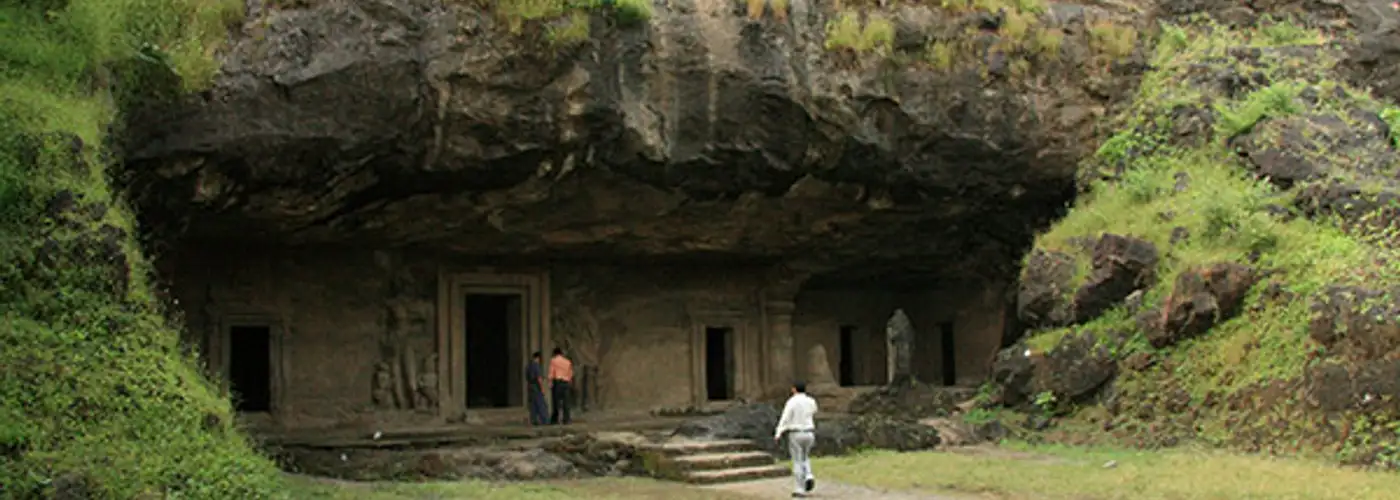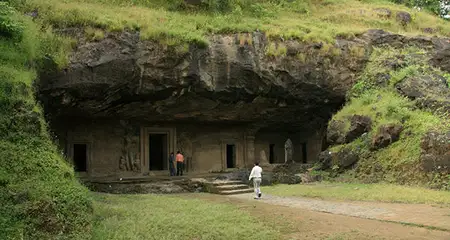A collection of Shiva and Buddhist rock-cut temples located near Mumbai, Elephanta Caves is a fascinating blend of art and heritage. No one knows for sure who built these caves or when, but it remains beyond doubt that these centuries-old caves are among the finest rock-cut architecture existing in India. Whether you are a history buff, a connoisseur of art and architecture or an excited traveler planning to book your hotels in Mumbai for a leisure trip, do not miss out on exploring this prime attraction in the city.
Looking for more details about this UNESCO World Heritage Site in Mumbai? This blog brings to you all the details about the Elephanta Caves, including its history, architecture, timings, entry fee, and others.
Elephanta Caves Information:
| Location | Elephanta Island |
| Timings | 9:00 am to 5:30 pm; closed on Mondays |
| Entry Fee | ₹ 10 for Indians and SAARC nationals; ₹ 250 for foreign nationals; free for children under 15 years of age |
| Video Camera | ₹ 25 |
| Still Camera | Free |
| Status | UNESCO World Heritage Site |
| Best Time to Visit | October to February |
| Origin | Between 5th and 9th century (approx.) |
| Architectural Style | Rock-cut style |
Elephanta Caves: History
The early history of the Elephanta Caves is unknown, but many historians agree on the point that the temples and reliefs on the site date back to somewhere between the 5th-century and 9th century. The site is located on Elephanta Island or Gharapuri, which means the village of caves in the Marathi language. The caves, as well as the island, were given the name Elephanta by Portuguese invaders after they took control of the place in 1534. It was the discovery of a gigantic rock-cut sculpture of an elephant on the island that prompted them to name the place so. In 1661, the colonial British rulers brought the island under their dominion.
Over time, these caves suffered significant damage and destruction by Persian invaders, Christian Portuguese soldiers, and Maratha as well as British rulers. In 1909, the British India officials initiated attempts to protect the caves from further damage. Later, the Government of India carried out restoration works at the site in the 1970s and made it a heritage site and a tourist attraction as we see it today.
Elephanta Caves Architecture
There are two groups of caves on Elephanta Island, each featuring the rock-cut style of architecture. The caves are carved out of solid basalt rock and cover an area of 60,000 sq. ft. The larger one of these two groups has five caves with numerous Hindu sculptures. Two Buddhist caves at the site make up the smaller group along with water tanks and a Stupa.
Each cave has been carved as a rock-cut temple with one main huge chamber, courtyards, two lateral chambers, and minor shrines. Cave 1 aka the Grand Cave is the biggest one among these and spreads across 39 meters from its entrance to the back. This cave temple is mainly dedicated to Lord Shiva and has several structures and carvings celebrating the deity and his different forms.
Elephanta Caves: Today
Today, the magnificent Elephanta Caves count among the top tourist attractions and historical monuments in Mumbai. This architectural marvel was granted the status of UNESCO World Heritage Sites in 1987. A two-day music and dance festival, called the Elephanta Festival, is held at the island every year in February. The caves are now under the maintenance of the Archaeological Survey of India (ASI).
How to Reach Elephanta Caves
The cave complex is situated about 10 km from the Mumbai Harbour. You will have to take a ferry ride from the Gateway of India to reach the site. Maharashtra Tourism Development Corporation (MTDC) offers ferry services to Elephanta Island from Apollo Bunder, which is located near the Gateway of India. Once you reach the island, you can hop on to the toy train to reach the cave entrance from the dock. Or you can climb the flight of 120 steep stone steps leading to the caves.
- Ferry Charges: ₹ 150 for adults; ₹ 125 for kids (3 to 7 years of age)
- Toy Train Ride: ₹ 10 per person
Things to See in the Elephanta Caves Complex
Elephanta Island is a treasure trove of architecture and heritage. You can find several sculptures and carvings here, each of which testifies to the incredible craftsmanship and architectural prowess of the bygone eras, such as:
- Cave 1 or the Great Cave, the largest cave on the island
- Trimurti, a three-headed Shiva statue considered to be the most important sculpture in these caves
- Gangadhara, Ardhanarishvara, Nataraja, and other sculptures in Cave 1
- Cave 2 to 4 on the Cannon Hill with smaller and mostly ruined works of art
- Cave 5, which is an unfinished cave
- Caves 6 and 7 on Stupa Hill, which reflect Buddhist elements
- A ruined Buddhist Stupa on Stupa Hill
Lesser Known Facts
- The giant elephant sculpture that led to the naming of the island is now located at Jijamata Udyan, the oldest public garden in Mumbai.
- The British India Government charged visitors to the Elephanta Caves with a temple tax from 1872 to 1903.
- Several scholars believe that the caves and the sculptures were used as a firing range by the Christian Portuguese soldiers for target practice.
Now, aren’t you excited to visit this centuries-old cave complex which will transport you back in time with its history, heritage, and ancient architecture? You can also check our blog on the one-day tour to Elephanta Caves for more details. So, let your tryst with history begin!
[showhotelbycity hotelcity=’Mumbai’]


























